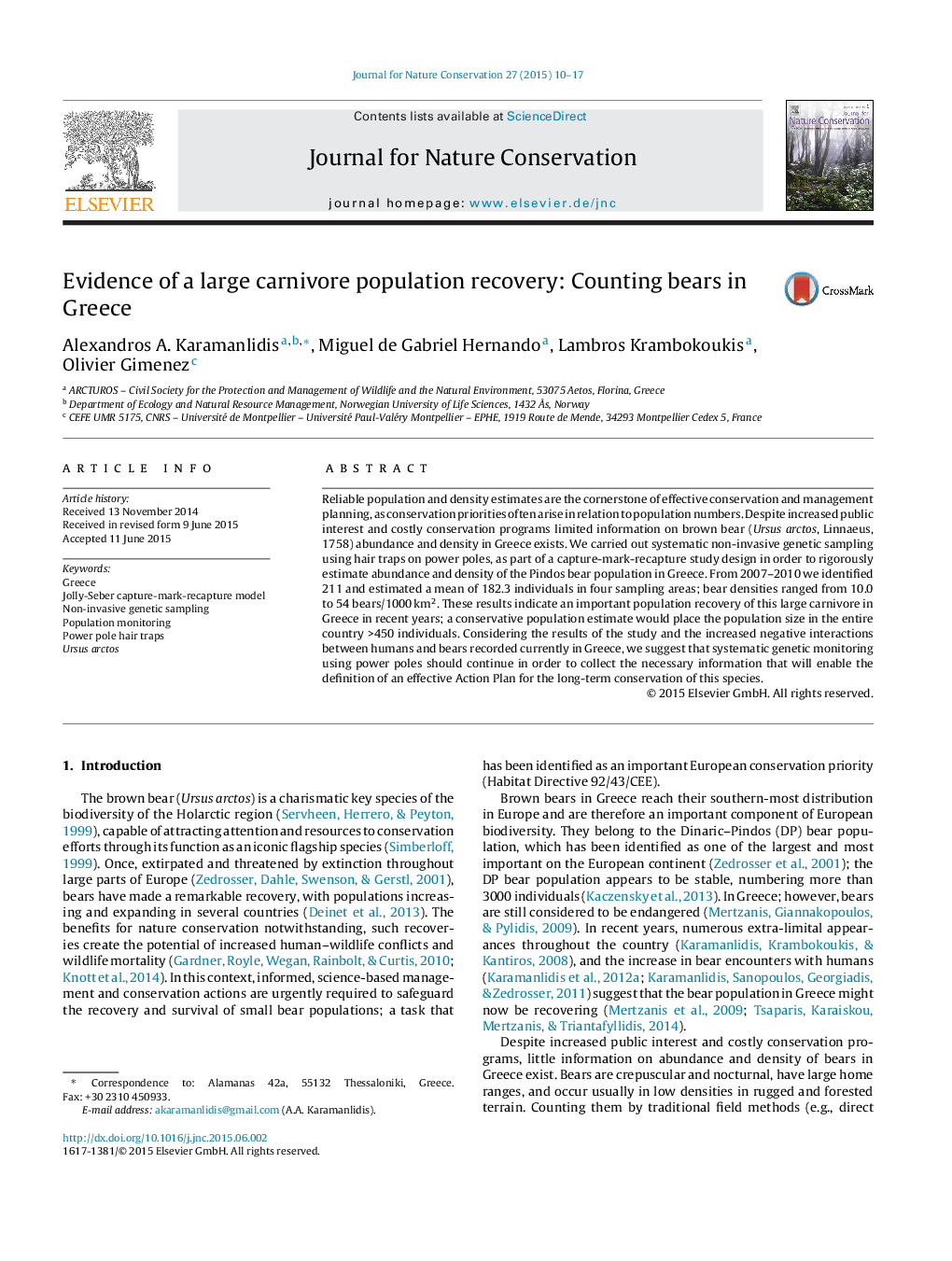| Article ID | Journal | Published Year | Pages | File Type |
|---|---|---|---|---|
| 4399800 | Journal for Nature Conservation | 2015 | 8 Pages |
Reliable population and density estimates are the cornerstone of effective conservation and management planning, as conservation priorities often arise in relation to population numbers. Despite increased public interest and costly conservation programs limited information on brown bear (Ursus arctos, Linnaeus, 1758) abundance and density in Greece exists. We carried out systematic non-invasive genetic sampling using hair traps on power poles, as part of a capture-mark-recapture study design in order to rigorously estimate abundance and density of the Pindos bear population in Greece. From 2007–2010 we identified 211 and estimated a mean of 182.3 individuals in four sampling areas; bear densities ranged from 10.0 to 54 bears/1000 km2. These results indicate an important population recovery of this large carnivore in Greece in recent years; a conservative population estimate would place the population size in the entire country >450 individuals. Considering the results of the study and the increased negative interactions between humans and bears recorded currently in Greece, we suggest that systematic genetic monitoring using power poles should continue in order to collect the necessary information that will enable the definition of an effective Action Plan for the long-term conservation of this species.
